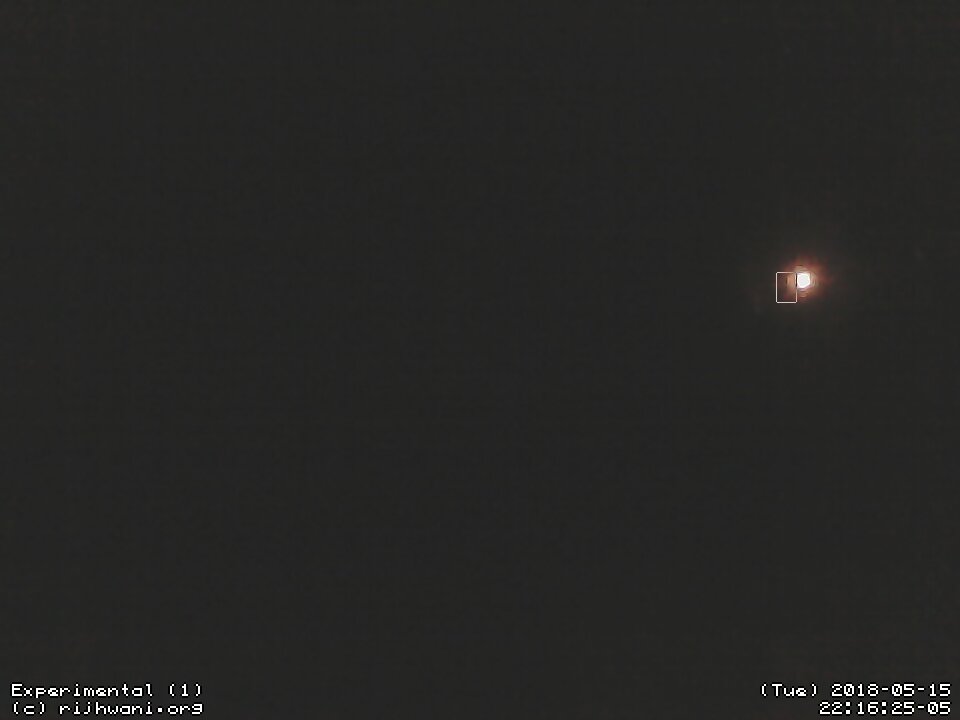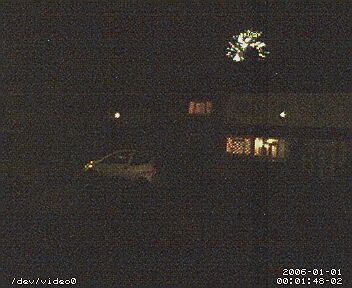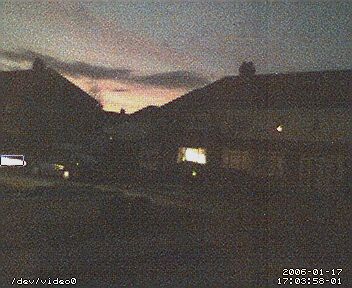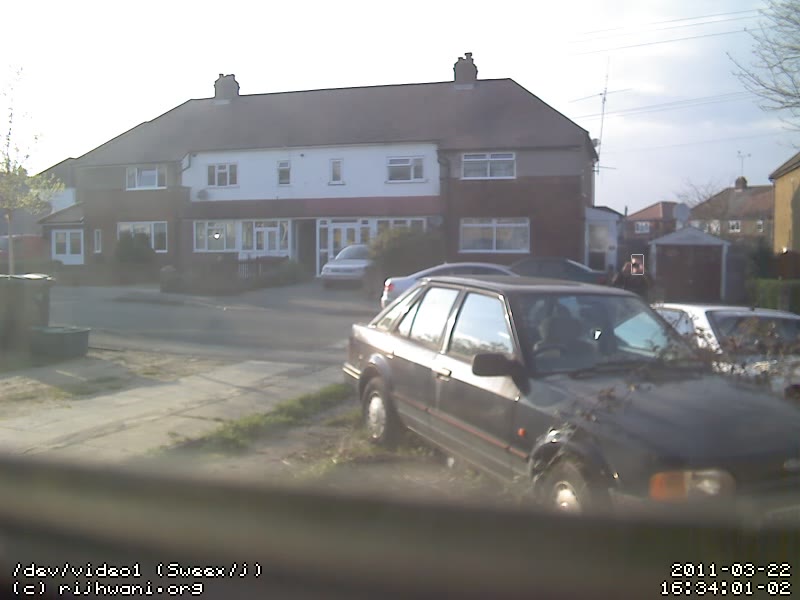A slice of life
(Kind of) Live video, from the trailing edge of suburbia
Chessington suburbia exterior (front)

Last change was 14:07, 06-Oct-2021 UTC (132 weeks ago). This camera is currently "offline".
Chessington suburbia experimental/remote

Last change was 21:16, 15-May-2018 UTC (309 weeks ago). This camera is currently "offline".
Take a peek at everyday life in a residential street in suburban London (Chessington, to be precise). This area is right at the very furthest south-western reaches of the London conurbation. Green Belt land is only some five to ten minutes walk away.
What you are looking at are static frames from cheap USB cameras, captured by motion-sensing software (the detected motion in the frame highlighted by a box). The page will reload every 30 seconds or so, but the pictures only change when specific signs of movement are detected in the field of view.
During the day, you are most likely to see such things things as the neighbourhood cats patrolling, pedestrians walking past - quite often parents escorting their children to or from school, the rubbish being collected, the postman. (The milkman is a long-distant memory.) A typical slice of suburban British life. You will see cars night or day, although at night they just leave interesting light trails.
It should not be necessary for me to say this, but unfortunately as a consequence of the past inconsiderate actions of others I have no choice: do not, under any circumstances, link directly to any of these camera images without first obtaining my express permission. In the absence of specific individual agreement to the contrary, all permission to use either camera's output or their archive images is expressly denied. At present that means that no other site has permission to link to these images. None. At all. Whilst these images are freely publicly viewable on this site they are intended merely as a curiosity. They are not placed in the public domain, nor provided for use by any other party for any purpose whatsoever. Can I make it any clearer?
Past pictures
Here are some of my favourite early snapshots. Originally, I did not have the bandwidth to put the videos online, over unmetered dial-up. Now, in these days of broadband, I do not consider it appropriate.
New Year fireworks, 2006

Neighbourhood fireworks celebrating the turn of the year. The amalgamated MPEGs triggered by this display cover 20 minutes real time, but only take up about a minute's playing time.
A winter sunset

In this particular instance, a headlight reflection from a vehicle moving outside the frame appears to have triggered motion detection, and luckily landed me with this rather pretty (if grainy) picture.
How it is done
The webcam system was originally implemented on an old Pentium II machine, with 128Mb RAM, running (Slackware) linux with Video4Linux drivers, Motion v3.1.18, and ffmpeg v0.4.8, Apache web server and PHP to create the dynamic information on the page. These days the hardware, operating system and software versions are all more contemporary, but it is still the same basic principle.
Camera 1 started out as an old Logitech Quickcam Express which I had had for years, and hence was stable (and one of the earliest cameras which had V4l, video-for-Linux, support). ("If it ain't broke, don't fix it.") In late 2010 it was upgraded to a cheap generic - but surprisingly functional higher resolution camera - which has had the surprising by-product of producing higher contrast night-time pictures. Camera 2 tends to be experimental, or more likely, offline altogether. Recently I have been experimenting with the "Dream Cheeky" USB Missile Launcher, with attached (Z-Star chipset) webcam. Recent experiments have also included remote updates "from the field" from a windscreen mounted webcam, attached to an Asus EeePC 901, through bluetooth and GPRS, occasionally from as far afield as Spain and Gibraltar.
The reason for the page's creation is simply one of (almost) idle curiosity, the interest for me was in the making and in learning from doing so, but once made it seemed pointless not to put it online.
Next up:
- to upgrade the camera hardware for better resolution and optics
- to experiment with capturing simultaneous images from adjacently mounted cameras, to simulate a stereoscopic view.
- to experiment with tilt/pan capable camera/mount
Recent releases of Motion (version 3.2.x)
Bottom line: despite now using it, after years of resisting, I remain unimpressed. I have now finally come along to the party by dint of converting and fully upgrading the server platform, but it has taken 5 years to get here, because I also had to change the run structure for the camera service. Despite swearing blind that I wouldn't do so, I ended up having no choice but to create a whole host of config files for each eventuality just to facilitate moving onto the newer versions with an assortment of cameras.
I tried upgrading as far back as December 2005 to the then-current version of Motion only to find somewhat bizarrely that the command line options - which I made extensive use of - had been removed, or worse had their usage completely change. Just teensy weensy little things like not being able to specify the target directory or not being able to force daemon mode if the default file configuration is foreground running. Completely obscure little features that no-one would have any use for - NOT! Consequently I was stuck with the increasingly aged version 3.1.18 for a very long time until I was able to accommodate the changes. I would have preferred to unbreak the stupidity, and and retrofit the command line features back myself but I simply have not had the time. The trouble is, this logical brick wall led to the 5 year hiatus in upgrading, and left me unable to apply fixes and new developments in the more recent releases. For years I had no choice but to stick with what worked largely, and required least effort (although the main purpose the attempted upgrade had been to try to overcome some problems which may have been fixed in newer releases). What motivated the team to make the apparently crazy decision to remove working features? It's not like it was a particularly bloated piece of software. Someone please tell me I'm not out of my mind here, that I haven't slipped in un-noticed from another universe, and that maintaining backward compatibility for existing users is an important issue. I simply fail to understand. There is some explanation as to how changing the internal structure mandated a change (removal) of command line options. I fail to see the logic of the argument - if an option is an option and can be specified in a file, it could just as easily be parsed from a command line. It's a crying shame, because I love the basic package, and all that great work has been rendered useless by one act of ill-considered vandalism.
